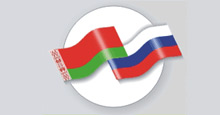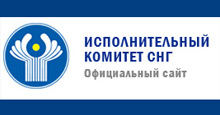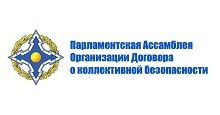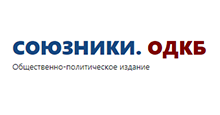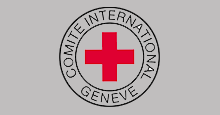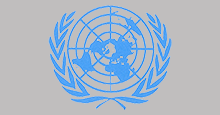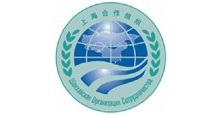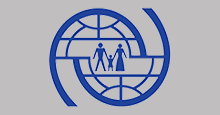On July 4, 2025, a delegation of the CSTO Secretariat visited the Central Military-Patriotic Park of Culture and Recreation of the Armed Forces of the Russian Federation "Patriot".
The Kyrgyz President Sadyr Japarov received the Ministers of Foreign Affairs of the CSTO member states and the Secretary General of the Organization in Cholpon-Ata on June 30. The meeting was attended by the Foreign Ministers of Kyrgyzstan, Belarus, Kazakhstan, Russia and Tajikistan.
On June 30, 2025, a regular meeting of the CSTO Council of Foreign Ministers was held in Cholpon-Ata (the Kyrgyz Republic) under the chairmanship of the Kyrgyz side, which was attended by the Organization's Secretary General Imangali Tasmagambetov.
Safar Umarzoda, Head of the Department for Countering Challenges and Threats of the CSTO Secretariat, took part in a special event (side-event) on "Countering Radicalization leading to terrorism and Extremism" organized by the Russian Federation on the margins of the OSCE Annual Conference on Security Review, where he reported on the measures taken by the CSTO on countering terrorism and extremism, and willingness to share the experience gained.
February 4 The Collective Rapid Reaction Force, the CSTO RRF, turns 10 years old
04.02.2019February 4, 2019 marks the 10th anniversary of the creation of the CSTO Collective Rapid Reaction Forces (CSTOR CSTO).
The history of the creation of the Collective Rapid Reaction Forces of the CSTO draws us to the end of 2008 - the beginning of 2009, when, in the conditions of a complex military and political situation in the world, including the regions adjacent to the CSTO member states, the transformation of international relations, and the expansion of the range of cross-border challenges and threats to the national and collective security of the CSTO member states, the need arose to develop the collective security system and above all its military component.
The Collective Rapid Deployment Forces of the Central Asian Region created by that time in the CSTO, designed to quickly counter the manifestations of international terrorism and other security threats, were limited to the range of tasks performed and their use within the Central Asian region only.
The presence of a large potential for conflict throughout the CSTO space has necessitated the creation of a universal tool to solve a wider range of tasks and adequately respond to existing challenges and threats throughout the Organization’s area of responsibility.
In this regard, in December 2008, in the course of the meeting of the heads of the CSTO member states in Kazakhstan, fundamental agreements were reached on starting work on the creation of the CSTO Collective Rapid Reaction Forces. It was about creating such a multifunctional component of the CSTO collective security system, which could solve the tasks of protecting the sovereignty and territorial integrity of states, countering terrorism, extremism, drug trafficking, conduct special operations against organized criminal groups, as well as solve issues related to the prevention and elimination of consequences natural and man-made emergencies.
As part of the implementation of the existing agreements, on February 4, 2009, during the extraordinary session of the CSTO Collective Security Council, the heads of state signed the Decision of the CSTO Collective Security Council “On Collective CSTO Rapid Response Forces”. Subsequently, on June 14, 2009, the Agreement on Collective CSTO Rapid Reaction Forces was signed, which is the main regulatory legal document regulating the procedure for the formation, functioning and application of the CSTO CSTO.
In pursuance of the decisions taken for the recruitment of the CSTO CSTO, all the CSTO member states have allocated the most combat-ready and mobile military contingents (formations, military units) and the formation of special forces equipped with modern and compatible weapons and military (special) equipment.
The CSTO CRRF is a component of the constant readiness of the forces and means of the collective security system, the total number of which is about 18 thousand people.
In accordance with the regulatory legal framework of the Organization, it is envisaged that the decision on the composition, deployment time and use of the CRRF contingents will be made by the Collective Security Treaty Organization in each case on the basis of the official appeal of one or several member states. However, Member States agreed that the RRF cannot be used to resolve disputes among themselves.
Pending a decision on the deployment and use of the CRRF, military contingents and the formation of special forces of the sending Member States are under national jurisdiction. Their acquisition, logistical and financial support is carried out by the relevant ministries and departments of the CSTO member states.
To manage the collective forces in the preparation and conduct of operations, a command is created headed by a commander.
In daily activities, before making a decision on the use of the CRRF, the tasks of planning their deployment and coordinating joint training are entrusted to the CSTO Joint Headquarters.
At present, the CSTO Joint Headquarters, together with the interested ministries and departments of the member states, have developed a plan for the rapid deployment of the CORF, which was approved by the Decision of the Council of Ministers of Defense and the Committee of Secretaries of the CSTO Security Councils.
With the adoption of the Decision of the Collective Security Council of the CSTO on the application of the CRRF, this Plan will be updated in accordance with the current situation, and by mutual agreement with the interested ministries and departments of the CSTO member states.
The direct planning of the use of the RRF contingents is carried out by the RRF Command.
The main tasks of the CRRF are:
- deploying contingents and demonstrating readiness for the use of military force;
- participation in the prevention and repulse of an armed attack, including aggression, localization of armed actions and conflicts;
- participation in activities to combat international terrorism, illicit trafficking in narcotic drugs, psychotropic substances and their precursors, weapons and ammunition, other types of transnational organized crime;
- strengthening the forces covering the state borders and protecting state and military facilities of the CSTO member states;
- participation in ensuring the operational deployment of joint (regional) groups of troops (forces);
- participation in the implementation of measures to protect the population from the dangers arising from the conduct of hostilities, as well as the elimination of emergency situations and the provision of emergency humanitarian assistance;
- other tasks defined by the CSTO Collective Security Council.
During 2009-2019, the Secretariat and the CSTO Joint Staff, in cooperation with the interested ministries and departments of the CSTO member states, systematically worked to improve the structure and composition of the CSTO RRF, build up their combat potential, equip special forces, military units and units of special forces weapons, military and special equipment.
Particular attention was paid to the preparation of the CSTO CSTO contingents to perform tasks for the intended purpose. Since 2012, Every year, as part of joint operational and combat training, joint exercises are held with the CSTO CRRF under the common name "Interaction".
In the course of these exercises, the coordination of the governing bodies and units formed on a multinational basis is carried out. At the same time, the CSTO CRRF governing bodies receive practice in organizing joint operations and improve the skills of the CRRF contingent management when it conducts it, and the personnel in joint actions when performing tasks for the intended purpose.

